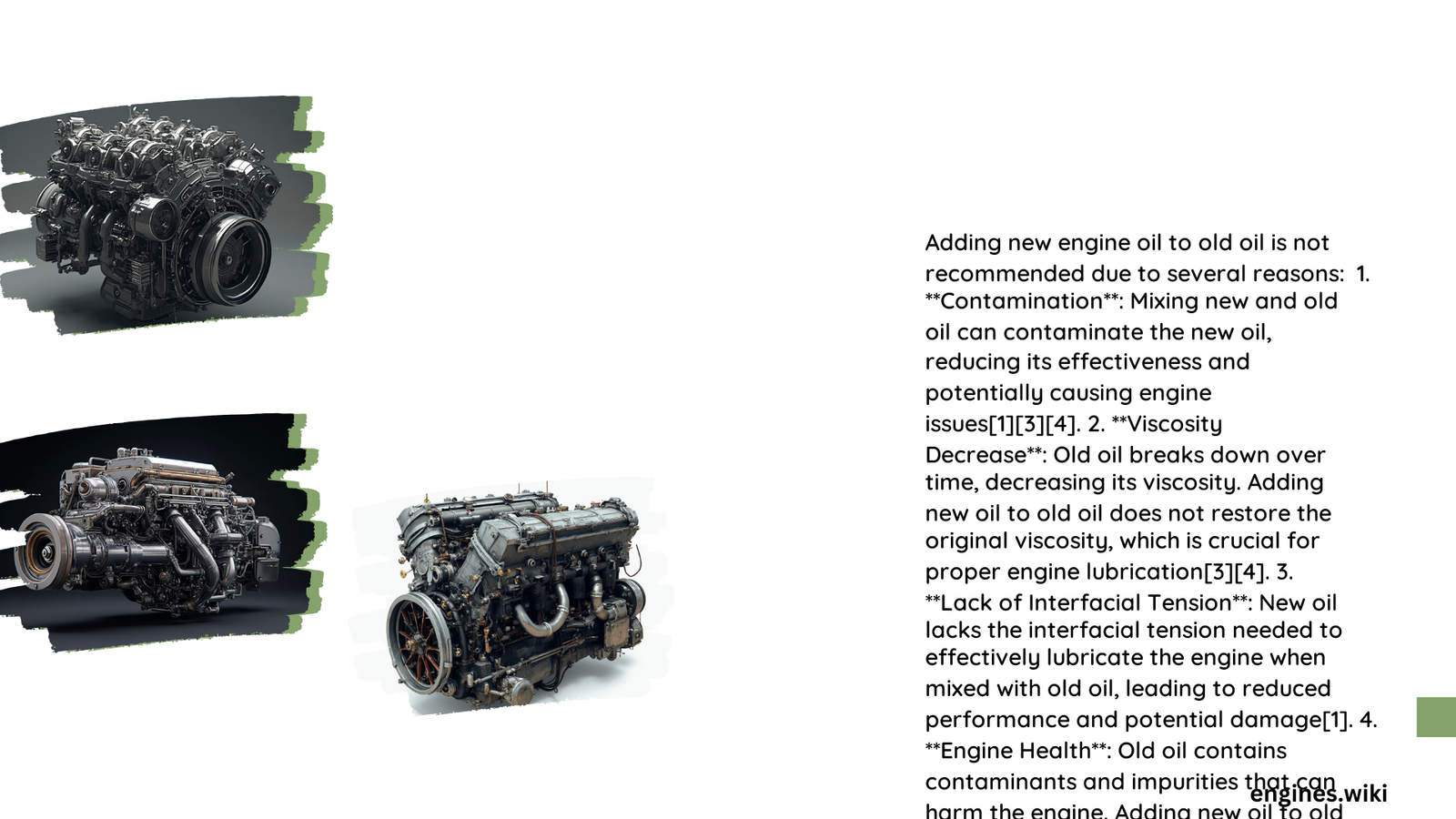Engine oil maintenance is a critical aspect of vehicle care that often leaves car owners wondering about the compatibility of mixing new and old oil. While it might seem convenient to top off your engine with fresh oil, the practice involves complex considerations of viscosity, additive chemistry, and potential long-term engine health implications. Understanding the nuanced dynamics of oil mixing can help prevent unintended mechanical complications and ensure optimal engine performance.
What Happens When You Mix New and Old Engine Oil?
When contemplating whether you can add new engine oil to old, several crucial factors come into play. The compatibility of oils depends on multiple technical and mechanical considerations that directly impact your vehicle’s engine performance and longevity.
Can Different Oil Viscosities Create Problems?
Mixing oils with different viscosity ratings can lead to significant performance challenges:
- Inconsistent Lubrication: Varying viscosity levels disrupt uniform oil flow
- Reduced Engine Protection: Uneven oil distribution increases friction
- Potential Wear Acceleration: Mismatched oils compromise critical engine components
| Oil Viscosity Comparison | Compatibility | Recommended Action |
|---|---|---|
| Same Viscosity Rating | High | Generally Safe |
| Different Ratings | Low | Avoid Mixing |
What Are the Risks of Mixing Oil Brands?
Different oil brands contain unique additive packages that may not interact harmoniously:
- Chemical Incompatibility: Additives might neutralize each other’s protective properties
- Performance Degradation: Mixed oils can lose their original protective characteristics
- Potential Sludge Formation: Incompatible additives might create unwanted engine deposits
How Do Manufacturer Recommendations Impact Oil Mixing?
Vehicle manufacturers provide specific guidelines to maintain engine integrity:
- Warranty Considerations: Mixing oils might void manufacturer warranties
- Recommended Oil Specifications: Always prioritize manufacturer-suggested oil types
- Performance Standards: Adhere to prescribed oil change intervals and types
What Technical Factors Determine Oil Compatibility?
Several technical elements influence the viability of mixing engine oils:
- Base Oil Composition: Synthetic vs. conventional oil interactions
- Additive Package Complexity: Unique chemical formulations
- Temperature Performance: Different oils respond differently to thermal stress
Can Professional Oil Analysis Help?
Professional oil analysis provides insights into potential mixing complications:
- Detailed Composition Assessment: Identifies chemical interactions
- Wear Particle Detection: Reveals potential engine stress indicators
- Predictive Maintenance Recommendations: Guides future oil selection strategies
Best Practices for Engine Oil Management

To minimize risks associated with oil mixing, consider these expert recommendations:
- Consistent Oil Selection: Use identical oil types and viscosity ratings
- Regular Oil Analysis: Periodically test oil composition
- Follow Manufacturer Guidelines: Adhere to recommended maintenance schedules
- Complete Oil Changes: Prefer comprehensive oil replacements over partial top-offs
When Should You Completely Change Your Oil?
Recommended oil change intervals vary based on multiple factors:
- Conventional Oil: Every 5,000-7,500 miles
- Synthetic Oil: Every 10,000-15,000 miles
- Severe Driving Conditions: More frequent changes recommended
Conclusion
While technically possible to add new oil to old in emergency situations, it’s not recommended as a standard practice. The potential risks to engine performance and longevity far outweigh momentary convenience. Always prioritize comprehensive oil changes and follow manufacturer-recommended maintenance protocols.
